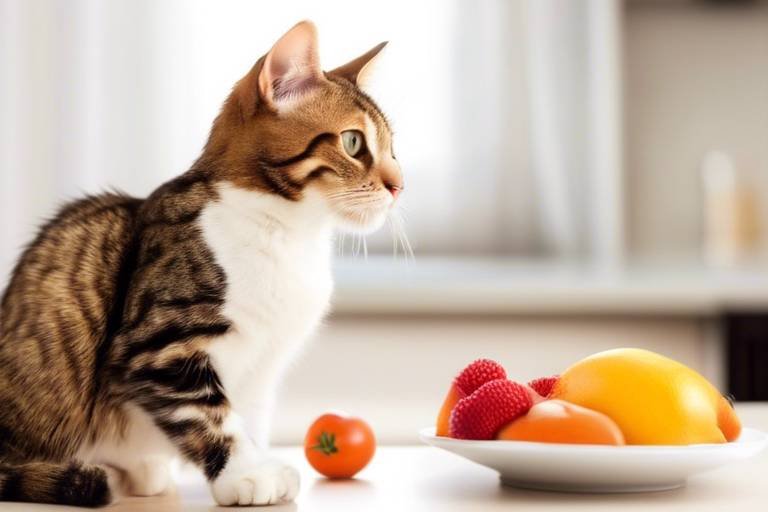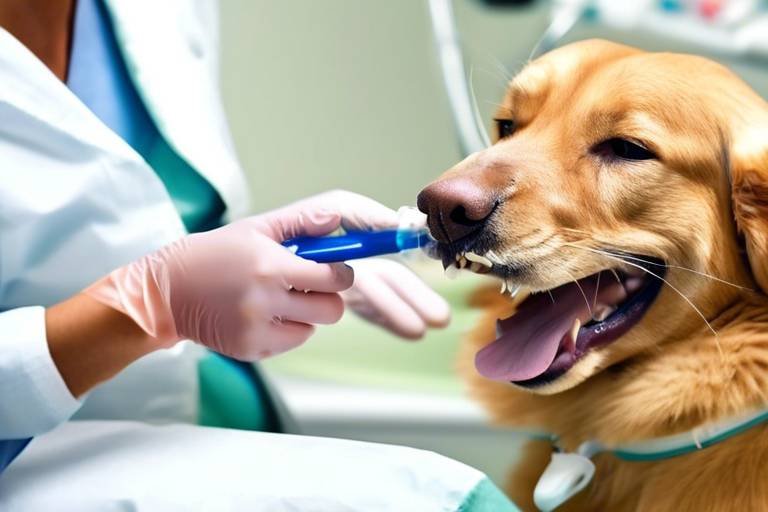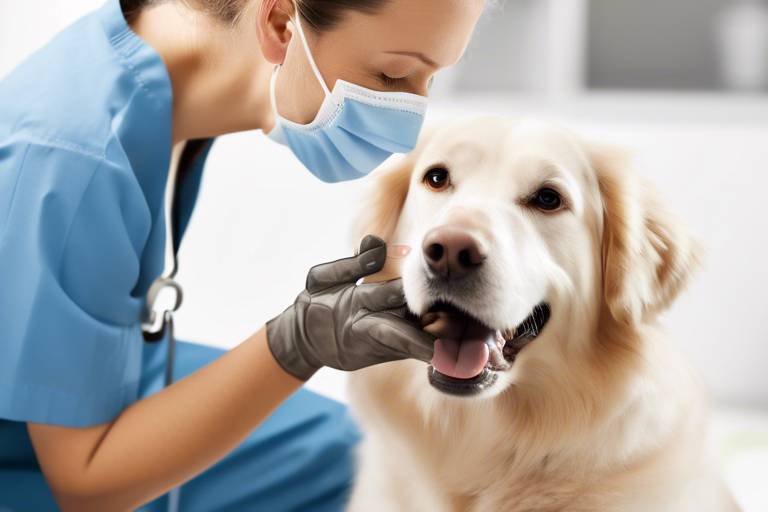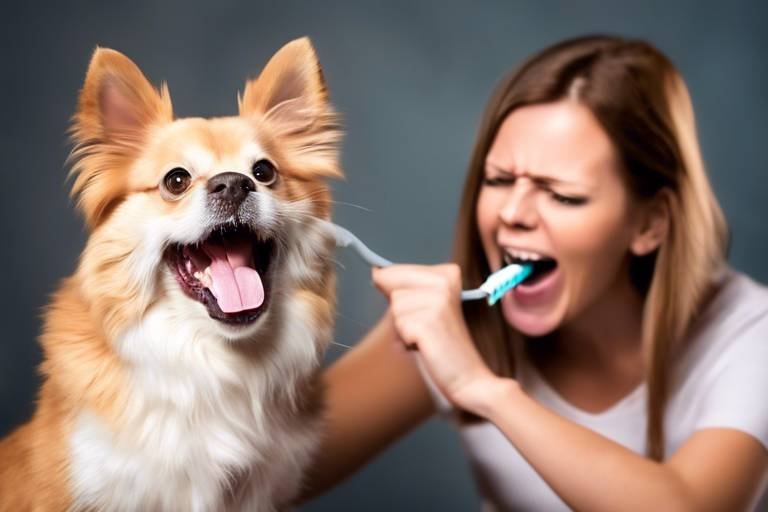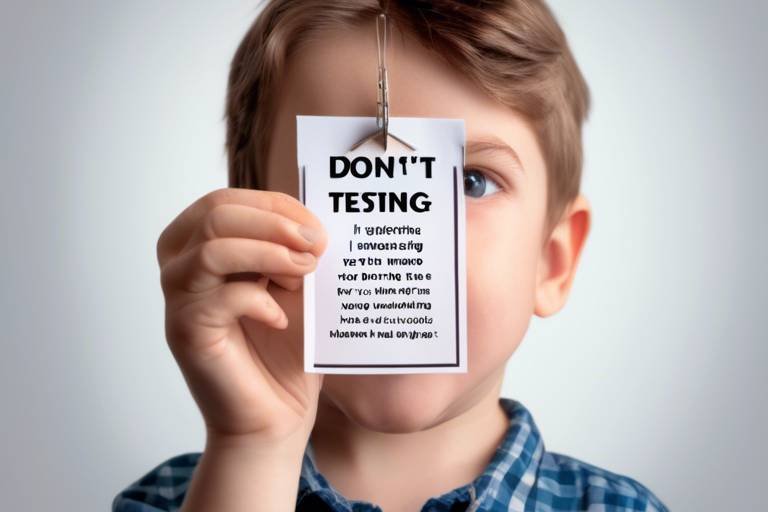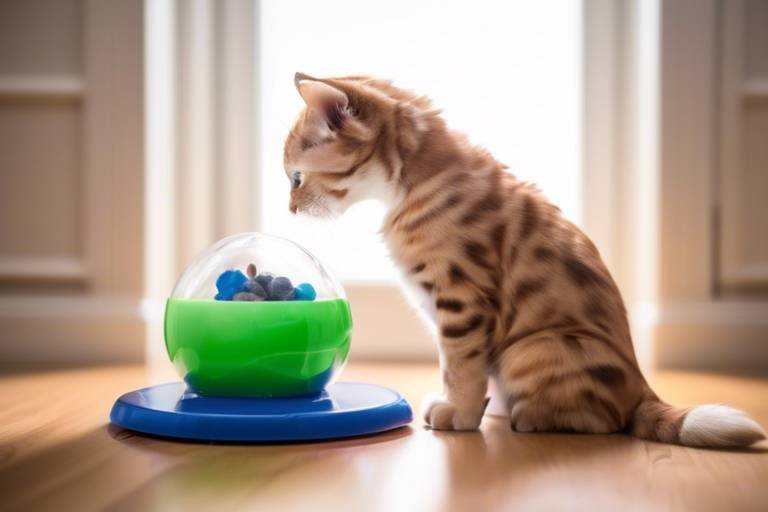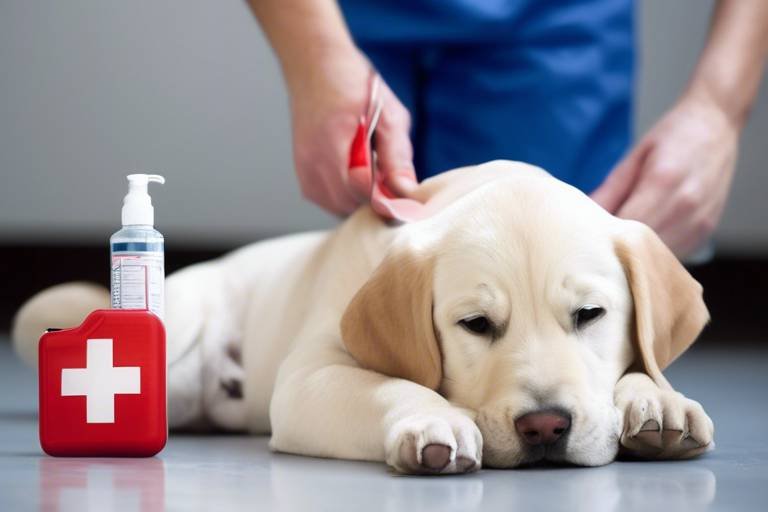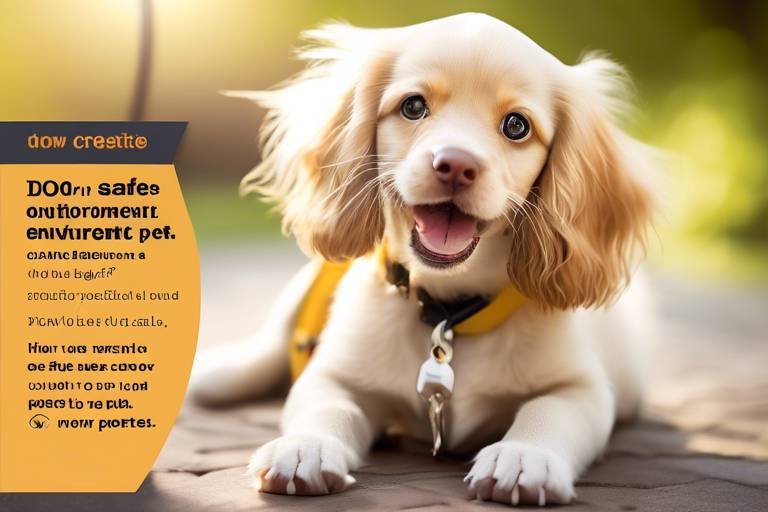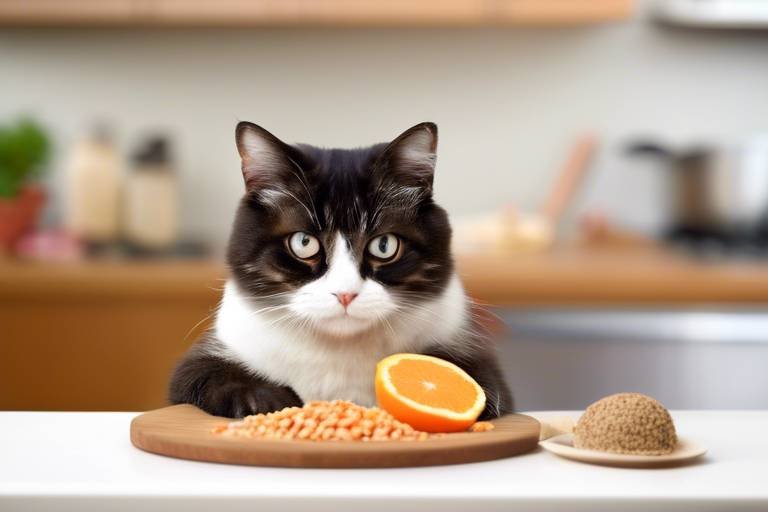Tips for a Healthy Diet for Cats
As a cat owner, you want the best for your furry companion. A healthy diet is essential in ensuring that your feline friend lives a long, happy, and active life. Just like humans, cats require a balanced diet that meets their unique nutritional needs. But what does that really mean? It’s not just about filling their bowl with any food you find at the store; it’s about understanding their specific requirements and making informed choices. In this article, we will explore essential tips and guidelines for ensuring your cat maintains a healthy diet, promoting their overall well-being and longevity.
Cats are obligate carnivores, which means their bodies are designed to thrive on a diet primarily composed of meat. Unlike dogs, who can adapt to a variety of diets, cats have unique dietary needs that differ significantly. They require specific nutrients such as taurine, arachidonic acid, and certain vitamins that are primarily found in animal tissues. Understanding these essential nutrients is crucial for making informed feeding decisions. For instance, taurine is vital for heart health and vision, while arachidonic acid plays a significant role in skin and coat health. When selecting cat food, look for products that list high-quality animal protein as the first ingredient, ensuring your cat gets the nutrition they need to flourish.
Selecting high-quality cat food is vital for your cat's health. With so many options available, it can be overwhelming to choose the right one. Start by reading the labels carefully; look for foods that meet the standards set by the Association of American Feed Control Officials (AAFCO). This ensures that the food is nutritionally complete and balanced. Additionally, consider your cat's age, weight, and health status when making your selection. For example, kittens have different nutritional needs than adult cats, and senior cats may require food that supports joint health.
Both wet and dry food have their advantages and disadvantages, and understanding these can help you make the best choice for your cat. Wet food is often more palatable and can provide extra hydration, which is beneficial, especially for cats that may not drink enough water. On the other hand, dry food is convenient, has a longer shelf life, and can help maintain dental health by reducing plaque buildup. It's essential to weigh these factors based on your cat's preferences and health needs.
Wet food can be a game-changer for many cats. Not only does it offer a higher moisture content, which is crucial for kidney health, but it also tends to be more flavorful, enticing even the pickiest eaters. Many cat owners find that their cats enjoy the texture and taste of wet food more than dry options. Plus, it can be an excellent way to introduce variety into your cat's diet.
Dry food, while less hydrating, has its perks too. It's incredibly convenient for busy pet owners—no need to refrigerate or worry about spoilage. Additionally, the crunchy texture can help keep your cat's teeth cleaner, promoting better dental health. Some pet owners choose to feed a mix of both wet and dry food to balance the benefits of each.
Some cat owners opt for homemade diets, believing it to be a healthier option. While this can be true, it’s essential to ensure that these meals are balanced and meet all of your cat's nutritional needs. Preparing homemade meals requires careful planning and often consultation with a veterinarian or pet nutritionist to ensure that your cat receives all necessary nutrients, including essential amino acids, vitamins, and minerals. Remember, just because it’s homemade doesn’t mean it’s automatically healthy!
Establishing a proper feeding schedule and portion control is key to preventing obesity in cats, which is a common issue among house pets. Cats thrive on routine, and having set meal times can help regulate their appetite and prevent overeating. Understanding how much food your cat needs based on their age, weight, and activity level is crucial. For example, a sedentary indoor cat will require fewer calories than an active outdoor cat. Use feeding guidelines provided on food packaging as a starting point, but adjust based on your cat's specific needs.
Determining the appropriate portion sizes can feel like a guessing game, but it doesn’t have to be. A general guideline is to feed about 20 calories per pound of body weight for weight maintenance. However, this can vary based on factors like age and health. Consider consulting with your veterinarian to tailor a feeding plan that suits your cat's lifestyle.
Feeding frequency is another crucial aspect of your cat’s diet. Most adult cats do well with two meals per day, while kittens may need to eat more frequently due to their rapid growth. Establishing a routine can help your cat feel more secure and satisfied, reducing the likelihood of begging or scavenging.
Avoiding common dietary pitfalls is essential for your cat's health. One frequent mistake is overfeeding, which can lead to obesity and related health issues. Another is not providing enough variety in their diet, which can lead to nutritional deficiencies. It’s also important to avoid feeding cats human food, especially those that are toxic to them, like onions, garlic, and chocolate. By being aware of these common mistakes, you can make better dietary choices for your beloved pet.
Some cats have special dietary requirements due to health issues or age. For example, cats with kidney disease may benefit from a low-protein diet, while those with allergies may need hypoallergenic food. Consulting with your veterinarian can help you identify these needs and make appropriate dietary adjustments. Specialized food options are widely available and can significantly improve your cat's quality of life.
- What should I look for in a cat food label? Look for high-quality protein sources, essential nutrients, and AAFCO approval.
- Can I feed my cat a vegetarian diet? Cats are obligate carnivores, and a vegetarian diet is not recommended.
- How often should I feed my cat? Most adult cats do well with two meals a day, while kittens may need more frequent feeding.
- Is it safe to give my cat human food? Some human foods are safe, but many are toxic, so it’s best to avoid it.

Understanding Cat Nutrition
Cats are fascinating creatures with unique dietary needs that set them apart from other pets. Unlike dogs, which are omnivores, cats are obligate carnivores, meaning they require a diet primarily made up of meat. This fundamental difference in their dietary requirements is crucial for their health and well-being. Understanding what your feline friend needs nutritionally is like cracking a code that unlocks the secret to a longer, healthier life for them.
When we talk about cat nutrition, it’s essential to recognize the key nutrients that should be included in their diet. These include:
- Proteins: Vital for growth, muscle development, and overall health. Cats need high-quality protein sources like chicken, fish, or beef.
- Fats: A concentrated energy source that also aids in the absorption of fat-soluble vitamins. Omega-3 and Omega-6 fatty acids are particularly beneficial for skin and coat health.
- Carbohydrates: While not as crucial as proteins and fats, carbohydrates can provide energy. However, cats do not require them in large amounts.
- Vitamins and Minerals: Essential for various bodily functions, including immune support, bone health, and metabolic processes. These are often included in commercial cat foods.
- Water: Though not a nutrient in the traditional sense, hydration is critical. Cats often do not drink enough water, especially if they eat dry food.
To make informed feeding decisions, it’s essential to read cat food labels carefully. Look for specific ingredients rather than vague terms. For example, “chicken” is better than “meat by-products.” Also, check for the presence of essential nutrients and ensure that the food meets the standards set by the Association of American Feed Control Officials (AAFCO). This ensures that the food is complete and balanced for your cat’s life stage, whether they are a playful kitten, an adult cat, or a senior.
Moreover, understanding the difference between commercial cat food types—such as premium, standard, and specialty diets—can also significantly impact your cat's health. Premium brands often contain higher quality ingredients and fewer fillers, which can lead to better overall nutrition for your cat. On the other hand, specialty diets are formulated for specific health issues, such as urinary tract health or weight management.
In summary, understanding cat nutrition is not just about filling a bowl with food; it’s about providing a balanced diet that caters to their unique requirements. By focusing on high-quality ingredients, proper nutrient balance, and hydration, you can help your cat thrive. Remember, a well-fed cat is a happy cat!
1. What is the best diet for my cat?
The best diet for your cat includes high-quality protein, healthy fats, and a balance of vitamins and minerals. Always consult your veterinarian for personalized recommendations.
2. Can I feed my cat homemade food?
Yes, you can feed your cat homemade food, but it must be balanced and meet all their nutritional needs. It's best to work with a vet or a pet nutritionist to create a suitable recipe.
3. How much water should my cat drink?
Cats should drink enough water to stay hydrated, which can vary based on their diet and activity level. If they eat dry food, they may need to drink more water compared to those on a wet food diet.

Choosing the Right Cat Food
When it comes to selecting the right cat food, the choices can feel overwhelming. With so many brands, flavors, and formulations available, how do you ensure that your furry friend is getting the best nutrition possible? The key lies in understanding what to look for on the labels and knowing your cat's specific dietary needs. Just like humans, cats require a balanced diet that provides them with the essential nutrients they need to thrive. This means not just picking the first bag you see at the store, but doing a bit of homework first.
One of the first things to consider is the protein content. Cats are obligate carnivores, which means they need a diet high in animal protein to stay healthy. Look for foods that list a quality source of protein, such as chicken, turkey, or fish, as the first ingredient. Avoid foods that primarily contain fillers, like corn or soy, which offer little nutritional value. In fact, a high-quality cat food should have at least 30% protein content. To help you visualize this, here's a quick comparison:
| Cat Food Type | Protein Content (%) | Quality Source |
|---|---|---|
| Wet Food | 30-40% | Chicken, Fish, Beef |
| Dry Food | 25-35% | Chicken Meal, Fish Meal |
| Homemade Diet | Varies | Meat, Fish, Eggs |
Moreover, it's essential to pay attention to additional ingredients that support your cat’s overall health. Look for foods that include:
- Taurine: An essential amino acid for heart and eye health.
- Omega fatty acids: Important for a healthy coat and skin.
- Vitamins and minerals: Necessary for immune function and overall vitality.
Don’t forget about the life stage of your cat! Kittens, adults, and senior cats have different nutritional requirements. Kittens need more calories and protein for growth, while senior cats may benefit from reduced calories and joint support supplements. Selecting food that is specifically formulated for your cat's life stage is crucial for their health and well-being.
Lastly, consider your cat's preferences and any food sensitivities they may have. Some cats are picky eaters, while others might have allergies to certain ingredients. If you notice any signs of discomfort or digestive issues after feeding, consult your veterinarian for guidance. Finding the right food might take some trial and error, but it's worth the effort to ensure your cat is happy and healthy.
Q: How often should I change my cat's food?
A: It's best to keep your cat on the same food for at least a few months before making a change. If you do decide to switch, do so gradually over a week to prevent digestive upset.
Q: Is grain-free cat food better?
A: Grain-free diets can be beneficial for some cats, especially those with allergies. However, many cats do well on diets that include grains. Always consult your vet for personalized advice.
Q: Can I feed my cat human food?
A: While some human foods are safe for cats, many are not. Foods like chocolate, onions, and garlic are toxic. Always check with your veterinarian before introducing new foods.
Wet vs. Dry Food
When it comes to feeding your beloved feline, the debate between wet and dry food is a hot topic among cat owners. Each type has its own set of advantages and disadvantages, making the choice a bit overwhelming. So, how do you decide which is best for your furry friend? Let’s dive into the details!
Wet food, often seen as a gourmet option, is typically more appealing to cats due to its rich aroma and texture. One of the main benefits of wet food is its high moisture content, which can help keep your cat hydrated. This is especially important since cats often don’t drink enough water on their own. Additionally, wet food can be easier for senior cats or those with dental issues to eat, as it requires less chewing. However, it does come with a few drawbacks; for instance, wet food can spoil quickly once opened, and it generally has a shorter shelf life than dry food.
On the flip side, dry food offers convenience and longevity. It’s easy to store and can be left out for longer periods without worrying about spoilage. Plus, dry food can help maintain your cat’s dental health by reducing plaque buildup as they chew. However, it’s important to note that dry food typically lacks the moisture content that wet food provides, which may lead to dehydration if your cat isn’t drinking enough water. Also, some cats may find dry food less appealing, which can lead to picky eating habits.
| Feature | Wet Food | Dry Food |
|---|---|---|
| Moisture Content | High | Low |
| Convenience | Requires refrigeration after opening | Easy to store and serve |
| Dental Health | Less effective | Helps reduce plaque |
| Palatability | Highly appealing | Varies by brand |
| Shelf Life | Shorter | Longer |
Ultimately, the choice between wet and dry food may come down to your cat's personal preferences and specific health needs. Many cat owners find success in offering a combination of both types, providing their cats with the benefits of moisture from wet food while also enjoying the convenience of dry food. This balanced approach can help ensure that your cat stays hydrated and satisfied while also meeting their nutritional requirements.
Remember, every cat is unique! It’s always a good idea to consult with your veterinarian before making significant changes to your cat's diet. They can provide personalized recommendations based on your cat’s age, health status, and lifestyle. So, whether you choose wet, dry, or a mix of both, you’re on the right track to keeping your feline friend happy and healthy!
- Can I feed my cat only dry food? While dry food can be a part of your cat's diet, it's essential to ensure they are getting enough moisture, either from wet food or fresh water.
- Is wet food better for my cat? Wet food has its benefits, particularly in hydration and palatability, but the best option often depends on your cat's individual preferences and health needs.
- How much food should I feed my cat? The amount can vary based on your cat's age, weight, and activity level. It's best to refer to the feeding guidelines on the food packaging or consult your veterinarian.
Benefits of Wet Food
When it comes to feeding your furry friend, wet food often shines as a top contender, and for good reason. One of the most compelling benefits of wet food is its high moisture content, which can be a game-changer for your cat’s hydration. Cats are notorious for not drinking enough water, and wet food can help bridge that gap. Think of it as a two-for-one deal: your cat gets a delicious meal while also staying hydrated. This is especially important for cats prone to urinary tract issues, as adequate hydration can help prevent these problems.
Moreover, wet food is often more palatable for cats. If you've ever watched your feline friend turn their nose up at a bowl of dry kibble, you know the struggle is real. Wet food typically contains more meat and fewer fillers, making it more appealing and satisfying for your cat. This can be particularly beneficial for picky eaters or older cats who may have lost some of their sense of smell and taste. Just like us, a flavorful meal can make all the difference!
Another aspect that makes wet food advantageous is its role in weight management. Cats that consume wet food tend to feel fuller and more satisfied, which can help prevent overeating. This is crucial in today’s world, where feline obesity is a growing concern. By providing your cat with a balanced wet food diet, you can help them maintain a healthy weight, which is essential for their overall well-being.
Here’s a quick comparison of wet food benefits:
| Benefit | Description |
|---|---|
| Hydration | High moisture content helps keep cats hydrated. |
| Palatability | More appealing taste and texture, especially for picky eaters. |
| Weight Management | Helps cats feel fuller, reducing the risk of overeating. |
In conclusion, wet food can be an excellent addition to your cat’s diet, offering numerous benefits that promote health and happiness. However, it’s essential to choose high-quality wet food that meets your cat's specific nutritional needs. Always consult with your veterinarian to ensure you’re making the best dietary choices for your beloved feline.
Benefits of Dry Food
When it comes to feeding your feline friend, dry food often stands out as a popular choice among cat owners. One of the primary benefits of dry cat food is its convenience. Imagine being able to pour a measured amount into your cat's bowl without the fuss of refrigeration or the mess of leftovers. This ease of use makes dry food a go-to option for busy pet parents who want to ensure their cats are well-fed without the hassle.
Another significant advantage of dry cat food is its role in promoting dental health. The crunchy texture of kibble can help reduce plaque and tartar buildup on your cat's teeth. Think of it as a natural toothbrush! Regular munching on dry food can assist in maintaining your cat's oral hygiene, which is crucial for their overall health. In fact, some brands even formulate their dry food specifically to support dental care.
Moreover, dry food typically has a longer shelf life compared to wet food. This means you can buy in bulk without worrying about spoilage. It’s a great way to stock up and ensure you always have food on hand, especially during those unexpected late-night cravings your cat might have. Plus, dry food is often more cost-effective, allowing you to provide your cat with quality nutrition without breaking the bank.
However, it's essential to choose a high-quality dry food that meets your cat's specific dietary needs. Not all dry foods are created equal! Look for products that list meat as the first ingredient and avoid those with excessive fillers or artificial additives. A well-balanced dry food can provide all the essential nutrients your cat requires, including:
- Proteins for muscle development and energy
- Healthy fats for skin and coat health
- Vitamins and minerals to support overall well-being
In summary, while both wet and dry cat food have their merits, dry food offers unique benefits that can enhance your cat's diet and health. It’s convenient, promotes dental hygiene, has a longer shelf life, and can be a budget-friendly option. Just remember to monitor your cat’s water intake, as dry food contains less moisture than wet food. Ensuring your cat stays hydrated is just as important as the food they eat!
Q: Can I feed my cat only dry food?
A: Yes, you can feed your cat only dry food, but it's essential to ensure that it's high-quality and meets all of their nutritional needs. Always provide fresh water alongside.
Q: How much dry food should I give my cat?
A: Portion sizes depend on your cat's age, weight, and activity level. Always refer to the feeding guidelines on the food packaging and consult with your veterinarian for personalized recommendations.
Q: Is dry food better than wet food?
A: Both dry and wet foods have their advantages. Dry food is more convenient and can help with dental health, while wet food provides extra hydration. A balanced diet may include both types.
Q: Can dry food cause obesity in cats?
A: Yes, overfeeding dry food can lead to obesity. It's crucial to control portion sizes and monitor your cat's weight regularly to maintain a healthy lifestyle.
Homemade Cat Diets
When it comes to feeding our furry companions, many cat owners are turning to homemade diets as a way to ensure their pets receive the best nutrition possible. But before you start whipping up gourmet meals for your feline friend, it’s essential to understand what goes into a balanced cat diet. Unlike dogs, cats are obligate carnivores, which means their bodies are designed to thrive on a diet primarily made up of meat. This unique dietary requirement makes it crucial to include the right ingredients in their meals.
Creating a homemade diet for your cat can be both rewarding and challenging. You want to ensure that each meal is packed with the necessary nutrients, including proteins, fats, vitamins, and minerals. It’s important to remember that cats cannot get all the nutrients they need from a vegetarian or vegan diet. To help you get started, here are some key components to consider when preparing homemade cat food:
- High-quality protein sources: Options like chicken, turkey, beef, and fish are excellent choices. Cats require a significant amount of protein to maintain their muscle mass and overall health.
- Healthy fats: Incorporating fats from sources like fish oil or chicken fat can provide energy and support healthy skin and coat.
- Essential vitamins and minerals: Cats need specific nutrients, such as taurine, which is found in animal tissues. It’s vital to include supplements if you're not using commercial pet food.
One common method for ensuring a balanced homemade diet is to consult with a veterinarian or a pet nutritionist. They can provide guidance on the appropriate proportions of ingredients and may recommend adding supplements to cover any nutritional gaps. For example, a typical balanced meal might consist of:
| Ingredient | Percentage of Meal |
|---|---|
| Protein source (e.g., chicken) | 70% |
| Fats (e.g., fish oil) | 20% |
| Vitamins and minerals (supplements) | 10% |
Moreover, it's essential to avoid certain foods that can be toxic to cats, such as onions, garlic, chocolate, and grapes. Always research or consult a professional before introducing new ingredients to your cat's diet. Homemade diets can be a great way to ensure your cat is getting high-quality nutrition, but they require careful planning and consideration.
In addition to the nutritional aspects, consider the convenience of preparing homemade meals. Some cat owners find it easier to stick to a commercial diet due to the time and effort required to create balanced meals from scratch. However, if you're passionate about cooking for your cat, it can be a fun and fulfilling endeavor. Just remember to keep your cat's health and dietary needs at the forefront of your planning.
Ultimately, whether you choose to feed your cat commercial food or homemade meals, the goal is to provide a balanced diet that supports their health and well-being. With the right knowledge and resources, you can make informed decisions that will benefit your beloved feline for years to come.

Portion Control and Feeding Schedule
Establishing a proper feeding schedule and practicing portion control are vital components of keeping your feline friend healthy and happy. Just like humans, cats can struggle with weight management, and it’s our job as responsible pet owners to ensure they’re not overindulging. It's easy to fall into the trap of free-feeding, where food is left out all day, but this can lead to obesity, which is a growing concern for many cats today. So, how can you strike a balance between satisfying your cat's hunger and maintaining their health?
First, let’s talk about portion sizes. Understanding how much food your cat needs is essential. A general rule of thumb is to consider your cat's age, weight, and activity level. For instance, a young, playful kitten will require more calories than a senior cat who prefers lounging around. To help you navigate this, here’s a simple table to guide you:
| Cat Age | Weight (lbs) | Daily Food Requirement (calories) |
|---|---|---|
| Kittens | 2-5 | 200-300 |
| Adult Cats | 6-10 | 250-350 |
| Senior Cats | 10+ | 200-300 |
Next, let’s dive into feeding schedules. Cats are creatures of habit and thrive on routine. Establishing a consistent feeding schedule can help regulate their metabolism and prevent overeating. You might consider feeding your cat twice a day—once in the morning and once in the evening. This not only helps them anticipate meal times but also keeps their energy levels stable throughout the day. However, if you’re dealing with a particularly hungry kitty, you might choose to divide their daily portion into three smaller meals.
Also, be cautious about the type of food you choose. High-quality cat food often comes with feeding guidelines on the packaging. Always refer to these suggestions as a starting point, but remember that every cat is unique. You might need to adjust their portions based on how active they are or if they seem to be gaining or losing weight. Regularly weighing your cat can be a helpful way to monitor their health and adjust their diet accordingly.
Lastly, it’s crucial to observe your cat during mealtime. Are they finishing their food quickly, or are they leaving some behind? If they’re gobbling it up in seconds, it might be time to reassess portion sizes or consider using a slow feeder to prevent them from eating too fast. On the other hand, if they’re consistently leaving food, it could indicate that they’re being overfed. Remember, a healthy cat is a happy cat!
Q: How do I know if my cat is overweight?
A: Look for signs such as difficulty feeling their ribs, a lack of a defined waist, or lethargy. Regular vet check-ups can also help assess their weight.
Q: Can I give my cat treats, and how do they fit into their diet?
A: Yes, treats are fine in moderation! Just ensure they don’t make up more than 10% of your cat's daily caloric intake.
Q: Is it better to feed my cat wet or dry food?
A: Both have their benefits. Wet food offers hydration, while dry food can help with dental health. It often depends on your cat's specific needs and preferences.
Recognizing Ideal Portion Sizes
When it comes to feeding your cat, understanding ideal portion sizes is crucial for maintaining their health and preventing obesity. Just like us, cats come in all shapes and sizes, and their dietary needs can vary significantly based on factors such as age, weight, and activity level. So, how do you determine the right amount of food to keep your feline friend happy and healthy? Let's dive into the essentials!
First and foremost, it’s important to refer to the feeding guidelines provided on the cat food packaging. These guidelines are usually based on your cat's weight and can give you a starting point for portion sizes. However, keep in mind that these are just general recommendations. Each cat is unique! For instance, an indoor cat may require fewer calories than an outdoor cat due to differences in activity levels. Therefore, you might need to adjust the portions accordingly.
To make things easier, here’s a quick reference table to help you understand the suggested daily caloric intake based on your cat's weight:
| Cat Weight (lbs) | Calories per Day |
|---|---|
| 5 | 200 |
| 10 | 300 |
| 15 | 400 |
| 20 | 500 |
Now that you have a rough idea of how many calories your cat needs, the next step is to consider their specific food. Different brands and types of cat food have varying caloric densities, so it’s essential to read the labels. For example, a cup of dry food may contain more calories than a can of wet food. To avoid overfeeding, measure your cat's food using a standard measuring cup, and be consistent with portion sizes.
Additionally, you should also pay attention to your cat's body condition. If your cat is gaining weight, it might be time to cut back on portions. On the flip side, if they seem too thin or are constantly begging for food, you may need to increase their servings. Monitoring their weight and adjusting portions accordingly is key to keeping your cat in good shape.
Another important aspect is the feeding frequency. Cats generally do well with two meals a day, but some owners prefer to leave food out for them to graze throughout the day. If you choose the latter, just be cautious about how much food you leave out, as free feeding can sometimes lead to overeating.
In summary, recognizing ideal portion sizes is about understanding your cat's individual needs and making informed decisions based on their weight, activity level, and the type of food you provide. With a little attention and care, you can ensure your furry friend stays healthy and happy!
- How can I tell if my cat is overweight? Look for signs such as difficulty feeling their ribs, a noticeable belly, or lack of energy. A visit to your vet can provide a professional assessment.
- Can I mix wet and dry food? Yes! Many cat owners choose to do this to provide variety and balance. Just be sure to adjust portion sizes accordingly.
- How often should I change my cat’s food? If you notice changes in your cat's health or weight, it might be time to reconsider their diet. Always consult your vet for tailored advice.
Feeding Frequency
When it comes to your cat's feeding frequency, consistency is key. Cats are creatures of habit, and establishing a routine can help them feel secure and satisfied. Generally, adult cats thrive on a schedule that includes two meals per day. This not only helps in managing their weight but also ensures they are getting the right amount of nutrients throughout the day. But what about kittens or senior cats? Let's break it down!
Kittens, for instance, require more frequent meals due to their rapid growth and higher energy levels. They should ideally be fed three to four times a day until they reach about six months of age. This helps them maintain their energy levels and supports their development. On the other hand, senior cats might also benefit from more frequent, smaller meals, especially if they have specific health issues that affect their appetite or digestion.
When deciding on feeding frequency, consider your cat's individual needs. For example, if your cat tends to overeat or has a tendency to gain weight, you might want to stick to a strict feeding schedule and measure out their portions. On the flip side, if your feline friend is more active and burns off energy quickly, they might appreciate a little flexibility in their feeding times. Just remember, the goal is to create a balance that keeps your cat healthy and happy.
Here’s a quick reference table to help you understand the recommended feeding frequencies based on your cat's life stage:
| Life Stage | Recommended Feeding Frequency |
|---|---|
| Kittens (up to 6 months) | 3-4 times a day |
| Adult Cats (1-7 years) | 2 times a day |
| Senior Cats (7+ years) | 2-3 times a day (or as advised by a vet) |
In conclusion, establishing a feeding routine that aligns with your cat's age, health, and lifestyle is essential. Monitor their weight and adjust their food intake accordingly. If you notice any changes in their eating habits or overall health, don't hesitate to consult your veterinarian for tailored advice. Your furry friend deserves the best care, and that includes a well-planned feeding schedule!
- How can I tell if I'm feeding my cat the right amount? Monitor their weight and body condition. Consult your vet if you're unsure.
- Can I leave food out for my cat all day? It's not generally recommended, as it can lead to overeating and obesity.
- Is it okay to change my cat's feeding schedule? Yes, but do it gradually to avoid digestive upset.

Common Dietary Mistakes
When it comes to feeding our beloved cats, it's easy to make mistakes that can negatively impact their health. Many cat owners unknowingly fall into common traps that can lead to nutritional deficiencies or obesity. One of the most frequent mistakes is overfeeding. Cats are masters at begging for food, and it's hard to resist those pleading eyes. However, giving in to their demands can result in weight gain and associated health issues. It's essential to stick to recommended portion sizes based on your cat's age, weight, and activity level.
Another common pitfall is choosing the wrong type of food. Not all cat foods are created equal, and many brands contain fillers or low-quality ingredients. Always read labels carefully and look for high-quality protein sources as the first ingredient. Cats are obligate carnivores, meaning they need animal-based proteins to thrive. Feeding them a diet high in carbohydrates can lead to digestive issues and long-term health problems.
Additionally, many cat owners make the mistake of not providing enough variety in their cat's diet. Just like humans, cats can become bored with their meals. A monotonous diet can lead to picky eating habits and nutritional gaps. Introducing different flavors and textures can keep mealtime exciting for your feline friend. However, be cautious when transitioning to new foods; do it gradually to avoid upsetting their stomach.
Moreover, some owners might overlook the importance of hydration. Cats are notorious for not drinking enough water, especially if they eat primarily dry food. This can lead to urinary tract issues and kidney problems. To combat this, consider incorporating wet food into their diet, as it has a higher moisture content. Additionally, providing fresh water daily and even using pet water fountains can encourage your cat to drink more.
Finally, it’s crucial to be aware of human food that is toxic to cats. Many owners mistakenly believe that sharing their meals is a way to bond with their pets. However, foods like onions, garlic, chocolate, and certain artificial sweeteners can be harmful or even fatal to cats. Always research before sharing your food, and stick to treats that are specifically formulated for feline consumption.
| Mistake | Consequence | Solution |
|---|---|---|
| Overfeeding | Obesity and related health problems | Stick to recommended portion sizes |
| Choosing low-quality food | Nutritional deficiencies | Opt for high-quality, protein-rich foods |
| Not providing variety | Picky eating habits | Introduce different flavors and textures |
| Neglecting hydration | Urinary tract and kidney issues | Incorporate wet food and ensure fresh water availability |
| Feeding harmful human foods | Toxicity or severe health risks | Only give treats designed for cats |
By being mindful of these common dietary mistakes, you can ensure that your cat leads a healthier, happier life. Remember, a well-fed cat is a happy cat, and making informed choices about their diet is one of the best ways to show your love.
1. How can I tell if my cat is overweight?
Look for signs such as difficulty feeling their ribs, a noticeable belly, or a lack of energy. A visit to your vet can help assess your cat's weight accurately.
2. Is it okay to feed my cat table scraps?
While some human foods are safe for cats, many are not. It's best to stick to cat-specific treats and avoid sharing your meals without proper research.
3. How often should I feed my cat?
Most adult cats do well with two meals a day, while kittens may require three to four smaller meals. Establish a routine that works for you and your cat.
4. Can I switch my cat's food suddenly?
It's best to transition to a new food gradually over a week to prevent digestive upset. Mix the new food with the old food, slowly increasing the new food's proportion.
5. What should I do if my cat refuses to eat?
If your cat suddenly stops eating, it's important to consult your veterinarian. Loss of appetite can be a sign of underlying health issues.

Special Dietary Needs
Just like humans, our feline friends can have that arise due to various factors such as age, health conditions, or lifestyle changes. It's essential to recognize these needs to ensure your cat leads a happy and healthy life. For instance, senior cats often require diets that are lower in calories but higher in certain nutrients to support their aging bodies. If your cat is diagnosed with conditions like diabetes, kidney disease, or allergies, a tailored diet becomes even more critical.
When considering a special diet for your cat, it’s crucial to consult with a veterinarian. They can provide insights on specific dietary requirements and recommend the best food options. Here are some common dietary needs that might arise:
- Weight Management: Overweight cats may benefit from a weight management diet that is lower in calories and fat.
- Kidney Health: Cats with kidney issues often need a diet low in protein and phosphorus to reduce strain on their kidneys.
- Allergies: If your cat has food allergies, a limited-ingredient diet can help identify and eliminate allergens.
- Diabetes: Diabetic cats may require high-fiber diets to help regulate blood sugar levels.
Additionally, some cats might have sensitivities to certain ingredients, which can lead to gastrointestinal upset. If you notice your cat having frequent digestive issues, it might be time to switch to a more suitable diet. Look for foods that are specifically formulated for sensitive stomachs, often labeled as such on the packaging.
Another consideration is the life stage of your cat. Kittens require a diet rich in protein and fat to support their rapid growth and energy needs, while adult cats need a balanced diet to maintain their health. Senior cats, on the other hand, might require specialized diets to address age-related health issues.
To help you navigate the world of cat nutrition, here's a simple table outlining some common dietary needs and their corresponding dietary adjustments:
| Health Condition | Dietary Adjustment |
|---|---|
| Obesity | Low-calorie, high-fiber foods |
| Kidney Disease | Low-protein, low-phosphorus diet |
| Food Allergies | Limited-ingredient diets |
| Diabetes | High-fiber, low-carbohydrate foods |
In conclusion, understanding your cat's special dietary needs is essential for their overall health and well-being. By paying attention to their specific requirements and consulting with a veterinarian, you can ensure that your feline companion receives the best nutrition possible. Remember, a well-fed cat is a happy cat!
1. How can I tell if my cat has special dietary needs?
If you notice changes in your cat's weight, energy levels, or digestive health, it's a good idea to consult your vet. They can help identify any specific dietary needs.
2. Is homemade cat food a good option for special dietary needs?
Homemade cat food can be beneficial, but it's crucial to ensure it’s nutritionally balanced. Always consult with a veterinarian before making any changes to your cat's diet.
3. Can I feed my cat human food if they have special dietary needs?
Some human foods can be safe for cats, but many are not. Always check with your veterinarian to ensure the food is appropriate for your cat's specific dietary needs.
4. How often should I change my cat's diet?
Changing your cat's diet should be done gradually and only when necessary. If you need to switch foods, do so over a week to avoid digestive upset.
Frequently Asked Questions
- What are the essential nutrients my cat needs?
Cats require a balanced diet that includes proteins, fats, carbohydrates, vitamins, and minerals. Protein is crucial for their energy and overall health, while fats provide essential fatty acids. Don't forget about taurine, an amino acid vital for heart and eye health!
- Should I choose wet or dry food for my cat?
It really depends on your cat's preferences and health needs! Wet food offers hydration and is often tastier for cats, while dry food can help with dental health and is more convenient. Mixing both can also be a great option!
- How can I prepare homemade meals for my cat?
Making homemade cat food can be rewarding, but it’s important to ensure it's balanced. Use high-quality proteins like chicken or fish, and include essential nutrients. Consulting a vet or a pet nutritionist can help you create a well-rounded diet!
- What is the ideal portion size for my cat?
Portion sizes vary based on your cat's age, weight, and activity level. A general guideline is to feed adult cats about 20 calories per pound of body weight. Always monitor their weight and adjust as needed!
- How often should I feed my cat?
Cats thrive on routine! Generally, adult cats do well with two meals a day, while kittens may need more frequent feeding. Establish a schedule that works for you and your feline friend!
- What are common dietary mistakes cat owners make?
One common mistake is overfeeding, which can lead to obesity. Another is not providing a balanced diet or relying too heavily on treats. Always read labels and ensure your cat's diet is nutritious and appropriate!
- How can I address special dietary needs for my cat?
If your cat has health issues or is aging, they may require special diets. Consult with your vet to find specialized food options or dietary adjustments that can help meet your cat's unique needs!

